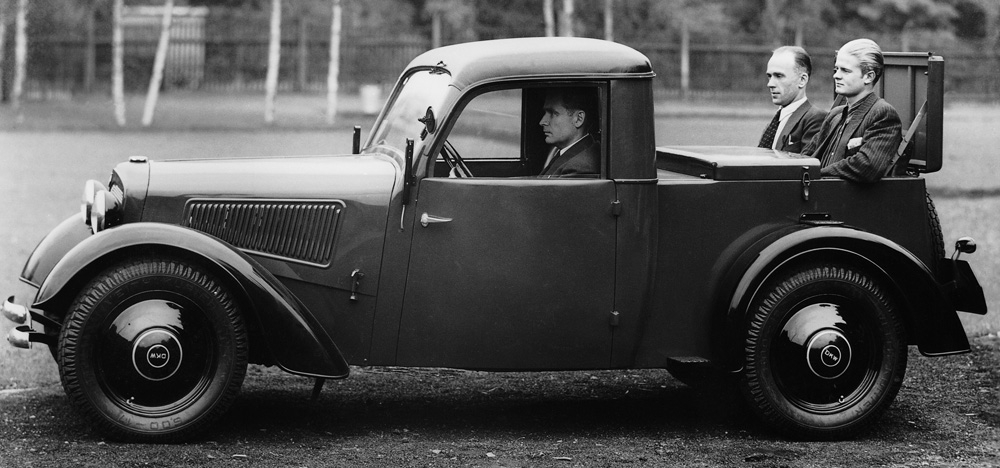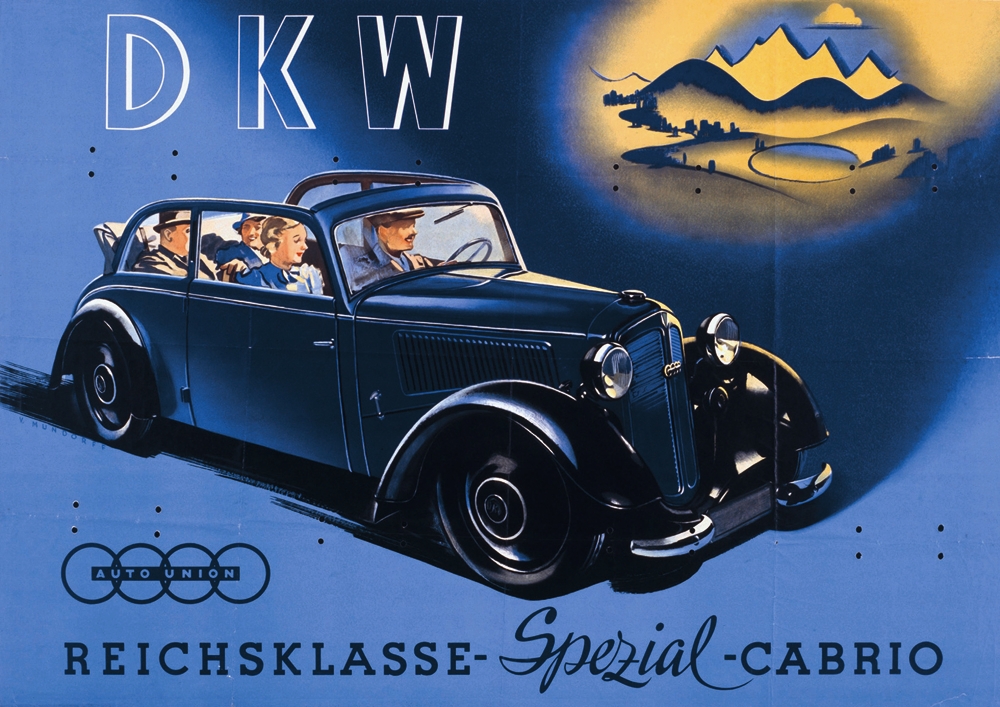|
|
|
History of AUDI | Horch | DKW | Wanderer DKW Automobiles Image Gallery (1917 to 1939)
DKW - the steam-powered vehicle (Dampfkraftwagen) of 1917 gave DKW its name
DKW P15 roadster, 600 cc, two-stroke inline engine, rear-wheel drive, 15 hp, 1928; the first DKW car.
1931 presented at the International Motorshow in Berlin: The DKW Front F1.
Small race cars enjoyed enormous popularity in the 20s and 30s. The DKW F1, which entered production in 1931, had a two-cylinder two-stroke engine in its motorsport version that generated 36 hp from a displacement of 0.6 litres.
DKW F7 implement truck, 700 cc, two-cylinder, two-stroke transverse engine, front-wheel drive, 20 hp (also capable of carrying passengers).
DKW "Reichsklasse" (F7) special convertible saloon, four-seater, 600 cc, two-cylinder, two-stroke transverse engine, front-wheel drive, 18 hp.
DKW - the Reichsklasse entry model had to make do with 18hp
DKW F7 "Front" deluxe convertible, two-seater, 700 cc, two-cylinder, two-stroke transverse engine, front-wheel drive, 20 hp.
DKW F8 "Front" deluxe convertible, four-seater, 700 cc, two-cylinder, two-stroke transverse engine, front-wheel drive, 20 hp.
DKW F8 "Meisterklasse" convertible saloon, four-seater, 700 cc, two-cylinder, two-stroke transverse engine, front-wheel drive, 20 hp.
DKW - the F5 Sport Roadster had up to 20 hp
DKW "Schwebeklasse" saloon, 1000 cc, four-cylinder, two-stroke V-engine with two charge pumps, rear-wheel drive, 30 hp.
DKW "Sonderklasse" convertible saloon, 1054 cc, four-cylinder, two-stroke V-engine with two charge pumps, rear-wheel drive, 32 hp.
Streamline - this DKW rear-engine streamline car was an early attempt in 1932
DKW Coupé with specialised body for the later cancelled Berlin to Rome tour
DKW entered the market at a time when the competition was long since established and succeeded in appealing to the emotions of customers and dealers alike. With brilliantly simple and sturdy products, DKW in particular made it possible for broad sections of the population to become mobile. Encouraged by clever advertising strategies and highly attractive instalment payment models, customers started to trust in the brand that they were also to remain faithful to after the war – although there were no new DKW products for years to come.
The natives looked in astonishment at the DKW Meisterklasse from Paul Hartlmaier at his expedition in India 1935/1936
DKW - two young ladies pose in the prototype DKW F9 from 1940 History of AUDI | Horch | DKW | Wanderer
|
|
Home < Audi < Audi Cars < Audi History
|

















